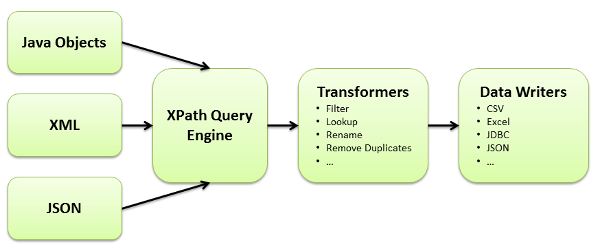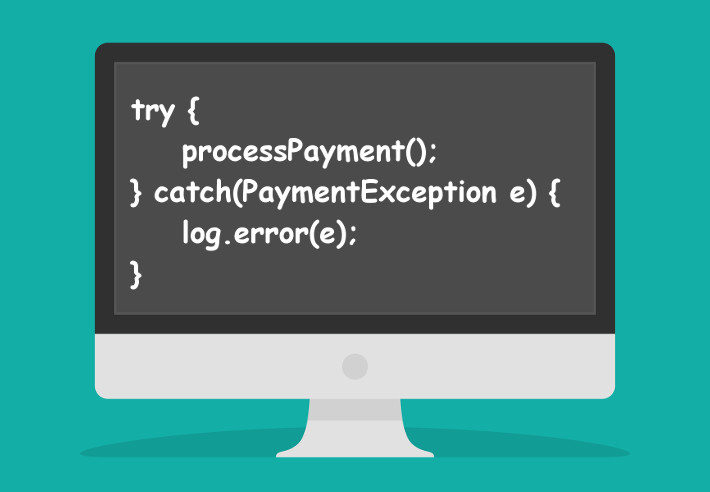Data Pipeline lets you read, write, and convert Excel files using a very simple API. This post will show you how to create Excel files containing more than one work sheet or tab.
Data Pipeline 3.0 Now Available
We’re pleased to announce the release of version 3.0 of our Data Pipeline engine.
This release includes the new Sliding Window Aggregations feature to perform continuous SQL group-by operations on streaming data.
We’ve improved the performance of the XPath based readers (JsonReader, XmlReader, and JavaBeanReader), included new conveniences to reduce your code size, and added several new transformers and filters.
We’re also now offering a free 30-day trial for you to take the premium and enterprise features out for a test drive.
How would you implement this Java class?
We’re hiring a new Java developer and decided to start by asking them to write code instead of the usual Q&A.
Recently we needed to add an hourly scheduler to our sliding window data aggregator and decided this would be a good test to see how people think and code.
Data Pipeline 2.3.4 Now Available
A new release of Data Pipeline is now available for download: https://northconcepts.com/downloads/. This release includes a new Twitter search reader, custom aggregate operations, and much more.
How to Query Java Objects with XPath
 Data Pipeline’s query engine allows you to use XPath to query XML, JSON, and Java objects. This walkthrough will show you how to query Java objects using XPath and save the results to a CSV file. While the reading and writing will be done with the JavaBeanReader and CSVWriter classes, you can swap out the CSVWriter for any other endpoint or transformation that Data Pipeline supports. Continue reading
Data Pipeline’s query engine allows you to use XPath to query XML, JSON, and Java objects. This walkthrough will show you how to query Java objects using XPath and save the results to a CSV file. While the reading and writing will be done with the JavaBeanReader and CSVWriter classes, you can swap out the CSVWriter for any other endpoint or transformation that Data Pipeline supports. Continue reading
How To Transfer Columns From One CSV File Into Another Using Java
This blog will show you how to pull selected columns from a CSV file containing IP geolocation data and save them into a second CSV file using our Data Pipeline Java library. As part of the transformation, you’ll also have the option to rearrange the order of the resulting columns.
Import CSV and Excel to Java Web Apps with Data Pipeline
 This blog will demonstrate how to upload Excel and CSV files into a database while using Data Pipeline to handle the differences in format and structure of the individual files. Continue reading
This blog will demonstrate how to upload Excel and CSV files into a database while using Data Pipeline to handle the differences in format and structure of the individual files. Continue reading
Data Pipeline 2.3 Now Available
- added streaming JSON reading and writing (simple and template based)
- added SimpleXmlWriter
- improved handling of recursive XML-to-records
- added user-definable demux strategies
- DeMuxReader is no longer a public class since it should not be reference directly
- improved exception handling in JdbcReader
- BUGFIX: JavaBeanReader now handles xpath for recursive text children
- updated Apache POI to v3.9
- IncludeFields & ExcludeFields now accept a collection of field names in their constructor and add method
- added JdbcReader.useColumnLabel property to allow fields to be named using the column labels (or aliases) instead of the underlying, real column names
- added Excel 2007 provider (POI_XSSF)
Excel handling now defaults to the Apache POI_XSSF (Excel 2007) provider, instead of POI (Excel 2003) - added FixedWidthField.align to allow left-filled (right aligned) fields
- added FixedWidthField.fillChar to allow fields to specify a different filler from their reader/writer
- reduced memory overhead for fields and records
- CSV performance improvements
- exception property values now truncated to 256 chars
- using StringBuilder (instead of StringBuffer) internally to improve performance
Generate Data Migration Java Code with Data Pipeline Builder
Data Pipeline Builder – our new web GUI – is now available in early access. DPB generates Java code for Data Pipeline by letting you configure your inputs, outputs, and transformations.
Continue reading
6 Tips to Improve Your Exception Handling

Updated: July 2021
Proper exception handling can save you days in troubleshooting. Unexpected production issues can ruin anyone’s dinner and weekend plans, at any time. Furthermore, your reputation is on the line if you can’t resolve them quickly. A clear policy on exception management will save you diagnosis, reproduction, and correction time. What’s most important, it will give you peace of mind (and some hours back!).
Here are 6 tips on how you too can improve your exception handling.
Continue reading
